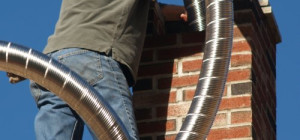Key Takeaways:
- It is understanding the impact of roofing materials on the environment and identifying sustainable alternatives.
- Exploration of current market challenges against the implementation of green roofing.
- Investigation into the advancements transforming the roofing industry.
- Evaluation of the environmental and economic benefits of sustainable roofing, contributing to urban heat reduction and water management.
- Future trends and the evolving landscape of environmentally responsible roofing options.
Table of Contents
- The Current State of Roofing Materials
- Challenges in Adopting Sustainable Roofing Practices
- Advancements in Eco-Friendly Roofing Materials
- The Lifecycle Assessment of Roofing Materials
- The Cost-Benefit Analysis of Green Roofing
- Green Roofing and Its Contribution to LEED Certification
- Roofing and Rainwater Management
- Consumer Awareness and Demand for Sustainable Roofing
- Installation and Maintenance of Eco-Friendly Roofs
- The Future of Roofing: Sustainability on the Horizon
The Current State of Roofing Materials
The choice of roofing materials is a crucial aspect that impacts not only the safety and efficiency of a building but also the environment. The construction sector, focusing on roofing, has significantly contributed to resource consumption and waste generation. Homeowners and project managers seeking Licensed and Insured Roofing Contractors must consider the long-term repercussions of their material choices from an economic and ecological perspective.
Traditionally, the most prevalent materials in the roofing industry have included heavyweights like asphalt shingles, known for their affordability and ease of installation, and metal roofing, valued for its durability and reflectivity. Yet, these traditional materials contribute to environmental concerns including, but not limited to, energy-intensive manufacturing processes, difficulties in recycling, and significant landfill space post-use. The growing awareness of these issues has prompted consumers and industry professionals to consider the broader, long-term environmental impacts of roofing materials.
It’s crucial to examine the lifecycle of these materials. Longevity and recycling potential are now key considerations when evaluating the sustainability of roofing components. There’s an evident shift towards materials with longer life spans, recyclable properties, and reduced carbon footprints. As environmental considerations take center stage, the roofing industry is at a crossroads, poised to move in a more sustainable direction.
Challenges in Adopting Sustainable Roofing Practices
The transition to sustainable roofing faces various obstacles, ranging from the higher initial costs of green materials to the inadequate number of skilled professionals experienced in installing them. The challenge lies in convincing stakeholders of the long-term benefits and navigating through the limited availability and potential logistical constraints associated with pioneering materials.
Market dynamics further complicate this picture. Without solid consumer demand, industry players lack the incentive to alter their established supply chains and production methods to accommodate eco-friendly materials. Additionally, existing infrastructure and building codes may only sometimes be conducive to implementing innovative roofing practices, necessitating an overhaul of regulatory frameworks to pave the way for sustainability.
Governments and regulatory bodies wield considerable influence in this realm. By instituting robust standards and incentives for sustainable building practices, they can significantly lower the barriers to entry for green materials. In the absence of such actions, however, industry-wide shifts towards eco-friendly alternatives will continue to be an uphill battle that requires concerted efforts on multiple fronts.
Advancements in Eco-Friendly Roofing Materials
Eco-consciousness within the roofing industry has led to the emergence of materials conceived to offset the environmental toll of conventional options. These revolutionary materials include recycled content shingles, which repurpose post-consumer waste into new, durable roofing, and living green roofs that champion biodiversity and improve air quality within urban areas.
Technological advancements have been central to this evolution, with research and development yielding materials designed to be kinder to the planet and more economical in the long run. For instance, cool roofs leverage reflective coatings to combat heat absorption, thus reducing the energy required to cool buildings and mitigating the urban heat island effect. It’s an exciting time for the roofing industry as it delves further into materials that can repair its relationship with the environment and offer lasting resilience against the elements.
The Lifecycle Assessment of Roofing Materials
Lifecycle assessment (LCA) is an invaluable process that evaluates the environmental impact of roofing materials over their entire life span. From the acquisition of raw materials through to manufacturing, installation, maintenance, and eventual disposal, LCA provides a comprehensive picture of the potential ecological footprint of a roofing product.
While traditional materials can seem cost-effective initially, their LCA often reveals a different story, demonstrating higher environmental costs over time. Transitioning to materials with a more benign LCA is essential for a sustainable roofing industry.
The Cost-Benefit Analysis of Green Roofing
The cost of green roofing might seem prohibitive initially, but the benefits can outweigh the initial investment. Sustainable roofing materials often have increased energy savings, tax incentives, and less frequent replacement needs. Moreover, the positive environmental outcomes, such as mitigated urban heat island effect—a phenomenon where urban areas experience higher temperatures than their rural counterparts—offer compelling community-level advantages, as indicated in resources like the EPA’s insights on green roofs.
Green Roofing and Its Contribution to LEED Certification
LEED, or Leadership in Energy and Environmental Design, is a well-regarded certification program that recognizes buildings for their environmental performance. Selecting the appropriate sustainable roofing materials is critical in pursuing LEED points, as it contributes directly to categories such as sustainable sites, water efficiency, and energy and atmosphere.
Successful green roofing projects not only improve the environmental credentials of a building but also amplify its aesthetic and economic value, demonstrating a possible win-win for the industry’s future.
Roofing and Rainwater Management
Another lesser-known function of roofs is their role in managing rainwater. Green roofing methods can significantly enhance water conservation efforts by incorporating designs that capture and reuse rainwater. This technique is simultaneously beneficial for the environment and for reducing utility bills.
From basic rain barrels to advanced water capture systems integrated into green roofing designs, these strategies can play a crucial role in sustainable water management initiatives within urban communities.
Consumer Awareness and Demand for Sustainable Roofing
Consumer demand often drives change, and the roofing industry is no different. As more individuals become aware of the benefits and necessity for sustainable living, the demand for eco-friendly roofing options has surged. This, in turn, propels manufacturers and contractors to innovate and provide greener products and solutions.
With greater understanding, homeowners are empowered to make informed decisions when selecting materials, pushing for a market that reflects their ecological values.
Installation and Maintenance of Eco-Friendly Roofs
Proper installation and ongoing maintenance are paramount for the optimal performance of eco-friendly roofs. Green roofing systems often require a different approach than traditional materials, emphasizing the importance of working with skilled contractors who understand these unique needs.
Regular maintenance is also crucial to extending the life cycle of these green roofs, ensuring they provide environmental benefits for years to come. Best maintenance practices not only support the roof’s integrity but contribute to the overall sustainability of the building.
The Future of Roofing: Sustainability on the Horizon
The roofing industry is poised for a wave of innovation that places sustainability at its core. Government incentives could serve as significant drivers for change, encouraging the adoption of eco-friendly materials and practices.
The integration of solar technologies in roofing materials, as highlighted by initiatives like the SunShot Initiative, underscores the potential for roofs to become active players in the future of sustainable living.
Finally, as we further comprehend the environmental influence of roofing choices, a more sustainable standard of living can be achieved. By making informed decisions, driving innovation, and embracing renewable practices, we can significantly shift our buildings’ impact on the world, paving the road for future generations to live in harmony with the environment. This requires us to look beyond immediate costs and short-term outcomes, investing instead in long-lasting solutions that secure a greener future.







